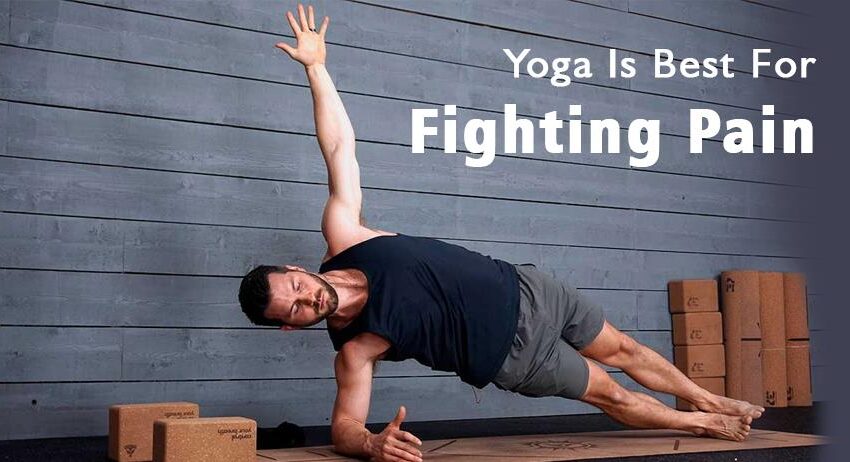The prevalence of pain is increasing due to stress, sedentary lifestyles, and various health conditions. Finding effective and holistic solutions becomes increasingly important in times like these.
One such solution that has gained widespread recognition is the ancient practice of yoga, which goes far beyond its reputation as a fitness trend and offers a profound and multifaceted approach to combating pain in our lives. There are many ways in which yoga serves as an ally in the fight against pain, and we will explore how Yoga is best to fight pain.
In addition to yoga, another effective and holistic approach to pain relief is chiropractic care. For individuals dealing with musculoskeletal pain, a chiropractor in Ponte Vedra Beach, FL can provide targeted adjustments that help alleviate pain, improve mobility, and promote overall well-being. Chiropractic treatment focuses on aligning the spine and joints, which can reduce pressure on nerves and ease muscle tension. This form of care is especially beneficial for people with chronic back pain, neck discomfort, and joint issues, offering a natural alternative to medication-based pain relief. Combining yoga and chiropractic care can create a balanced approach to managing and reducing pain, addressing both body alignment and flexibility.
Understanding Pain and Its Origins
Pain, whether chronic or acute, is a complex phenomenon influenced by various physical, emotional, and psychological factors. Before delving into the ways yoga can alleviate pain, it is essential to grasp the nature of pain and its origins. While medications provide temporary relief, they often come with side effects and fail to address the root causes. Yoga, on the other hand, adopts a holistic perspective by addressing the mind-body connection.
The Mind-Body Connection in Yoga
Yoga is renowned for its emphasis on the mind-body connection, recognizing that mental and emotional well-being profoundly affects physical health. Through a combination of physical postures (asanas), breath control (pranayama), and meditation, yoga works to harmonize the mind and body. T
his integrated approach is especially beneficial in managing pain, as it targets both the physical symptoms and the underlying emotional and psychological contributors. You can regain comfort and control with Pain O Soma 500, a powerful muscle relaxant that alleviates moderate to severe pain.
Physical Benefits of Yoga for Pain Relief
Increased Flexibility and Joint Mobility
Yoga involves a series of gentle stretches and poses that enhance flexibility and promote joint mobility. Increased flexibility can alleviate tension in muscles and joints, reducing the strain that often leads to pain.
Relevant Topics: 5 Best Yoga Poses for Period Cramps | Ways Yoga Can Help Improve Your Skin
Strengthens Muscles
Many chronic pain conditions, such as lower back pain, are exacerbated by weak muscles. Yoga, with its focus on body weight-bearing poses, effectively strengthens muscles, providing better support for the spine and joints. Relax and replenish your sense of well-being with Pain O Soma 350, a trusted muscle relaxant that soothes mild to moderate pain.
Improved Posture
Poor posture is a common contributor to chronic pain, especially in the neck, shoulders, and back. Yoga promotes awareness of body alignment and helps individuals develop better posture habits, reducing the risk of pain.
Enhanced Circulation
The controlled breathing techniques in yoga improve blood circulation, ensuring that oxygen and nutrients reach all parts of the body. This increased circulation contributes to better tissue repair and overall pain management.
Mindful Breathing Techniques
Yoga places significant emphasis on mindful breathing or pranayama. The controlled and intentional breathing patterns in yoga serve as a powerful tool in pain management.
Relaxation Response
Deep, diaphragmatic breathing activates the body’s relaxation response, reducing stress and lowering cortisol levels. This, in turn, diminishes the perception of pain and fosters a sense of calmness.
Mind-Body Awareness
Focused breathing cultivates a heightened awareness of the present moment. This mindfulness helps individuals detach from negative thought patterns associated with pain, fostering a more positive mindset. Using Pain O Soma 350mg, you can relieve muscle pain and enhance your quality of life while reducing discomfort.
Meditation and Pain Management
Meditation, an integral aspect of yoga, plays a pivotal role in pain management by fostering a deep sense of inner calm and mindfulness.
Mindfulness Meditation
Mindfulness meditation teaches individuals to observe pain without judgment, acknowledging its presence without succumbing to negative emotions. This non-reactive awareness can significantly alter one’s relationship with pain.
Visualization Techniques
Guided imagery and visualization, often incorporated into yoga practices, allow individuals to redirect their focus away from pain. By creating positive mental images, individuals can influence their perception of pain and reduce its impact on their daily lives.
Yoga for Specific Pain Conditions
Back Pain
Yoga, particularly poses that strengthen the core and improve spinal flexibility, has shown remarkable efficacy in alleviating back pain. Practices like Cat-Cow stretches, and Cobra pose can provide relief for both acute and chronic back issues.
Arthritis
Gentle yoga, adapted to the specific needs of individuals with arthritis, can enhance joint flexibility and reduce inflammation. Water-based yoga, such as aqua yoga, is particularly beneficial for those with arthritis, offering support and resistance. Pain O Soma 500mg offers targeted relief for muscle discomfort, enabling you to live pain-free and active.
Migraines
Yoga’s stress-reducing benefits can be particularly helpful for migraine sufferers. Incorporating relaxation techniques, gentle poses, and focused breathing can mitigate the frequency and intensity of migraines.
Final Words
At PowPills, you can find generic pain relievers at a discounted price. In the quest for effective pain management, yoga emerges as a holistic and sustainable solution. Its multifaceted approach, addressing the physical, emotional, and psychological aspects of pain, distinguishes yoga from conventional remedies.
By fostering a mind-body connection, improving physical well-being, and incorporating mindful practices, yoga proves itself to be an invaluable ally in the battle against pain.

